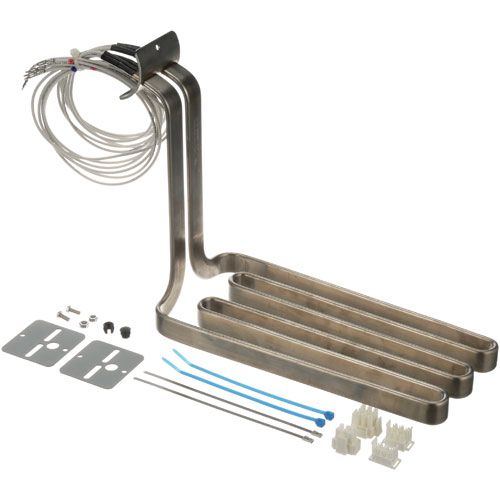Plant-Based Dining: The Next Big Shift In The Restaurant Industry For 2024
As global food trends evolve, plant-based dining has emerged as one of the most significant shifts in the restaurant industry. This movement, propelled by sustainability concerns, health-conscious consumers, and innovative culinary creations, is redefining how restaurants operate. In 2024, plant-based dining is not just a niche trend; it’s a transformative force shaping menus, supply chains, and customer experiences.
Why Plant-Based Dining is Taking Center Stage
The surge in plant-based dining is reshaping the restaurant industry, prompting businesses to adapt swiftly to meet customer expectations. Restaurants are going beyond traditional vegetarian dishes, embracing innovative approaches to create flavorful, sustainable, and inclusive menus. With the rise of flexitarianism, eateries are balancing creativity with practicality to appeal to a broader audience. These changes reflect not just a response to demand but a commitment to future-ready dining. Here’s how restaurants are embracing this transformative trend:
Environmental Awareness Driving Change
Climate change awareness has made sustainability a central focus for consumers and businesses. The restaurant industry is a significant contributor to greenhouse gas emissions, with animal agriculture accounting for a substantial share. Plant-based dining offers a solution by reducing carbon footprints and conserving water and land resources.
Health-Conscious Eating
Consumers are increasingly mindful of what they eat, gravitating towards plant-based options for their perceived health benefits. Diets rich in vegetables, legumes, and whole grains are associated with lower risks of chronic diseases, making them attractive to a health-conscious audience.
The Rise of Flexitarianism
The rise of flexitarianism—consumers who primarily eat plant-based but occasionally include animal products—has expanded the market. Restaurants catering to this demographic can capture a broader audience, blending inclusivity with innovation.
Looking for reliable solutions to maintain your commercial kitchen equipment and stay ahead in the competitive restaurant industry? At PartsFe CA, we offer a comprehensive range of burners, thermostats, gaskets, filters, heating elements, valves, and casters designed to keep your operations running smoothly. With quality parts tailored for commercial needs, we help you ensure efficiency and minimize downtime. Explore our collection to find exactly what you need for seamless equipment performance.
How Restaurants Are Adapting to the Trend
Plant-based dining has pushed restaurants to reimagine their offerings, from fast food to fine dining. Chefs and owners are embracing innovative ingredients, advanced technologies, and partnerships to cater to evolving consumer preferences. These adaptations not only enhance the dining experience but also ensure long-term competitiveness in a rapidly changing industry.
Plant-Based Menus: A Competitive Edge
Leading restaurant chains and fine dining establishments are redesigning their menus to include a variety of plant-based options. These additions are not limited to salads but include innovative offerings such as plant-based burgers, pizzas, and even desserts.
Innovative Ingredients at the Forefront
2024 has seen a surge in the popularity of alternative proteins, such as tempeh, seitan, and jackfruit, alongside plant-based meat and dairy substitutes. Restaurants are experimenting with these ingredients to create dishes that rival their traditional counterparts in taste and texture.
Check out the Future Trends: What's Next For Restaurant Equipment?
Collaboration with Food Tech Companies
The collaboration between restaurants and food tech companies has fueled the plant-based revolution. Companies like Beyond Meat, Impossible Foods, and Oatly have partnered with restaurants to supply high-quality alternatives to animal-based products.
Technological Innovations Powering Plant-Based Dining
Technology is at the heart of the plant-based revolution, enhancing everything from menu creation to supply chain management. Restaurants are leveraging cutting-edge tools to stay ahead of consumer expectations and streamline their operations.
AI and Data Analytics in Menu Development
Restaurants are using AI-driven insights to analyze customer preferences and predict trends, enabling the creation of plant-based menus that cater to diverse tastes. Data analytics also help identify the most cost-effective and sustainable ingredients.
3D Printing for Food Customization
The advent of 3D food printing technology is making plant-based dining more creative and customizable. This innovation allows chefs to experiment with textures and presentations, elevating the dining experience.
Supply Chain Optimization
Blockchain and IoT are revolutionizing plant-based supply chains, ensuring transparency and sustainability. Restaurants can now source ethically produced ingredients while minimizing waste.
Key Challenges in Embracing Plant-Based Dining
Despite its benefits, adopting plant-based dining comes with its own set of challenges. Restaurants must overcome cost, perception, and logistical barriers to succeed in this evolving market.
Overcoming Cost Barriers
While plant-based options are becoming more affordable, cost remains a concern for many restaurateurs. Ingredients like alternative proteins are often priced higher than their traditional counterparts. However, economies of scale and technological advancements are gradually addressing this issue.
Breaking Taste Stereotypes
Despite growing acceptance, some consumers perceive plant-based dishes as bland or less satisfying. Chefs are challenged to craft meals that appeal to a wide audience, ensuring flavor profiles that rival traditional dishes.
Logistical Hurdles
Integrating plant-based options requires supply chain adjustments and staff training. Restaurants must invest in sourcing reliable suppliers and educating their teams on new cooking techniques.
Consumer Preferences: What’s Driving the Demand?
Consumer preferences are the backbone of the plant-based dining movement, shaping how restaurants cater to evolving tastes. Diners today seek transparency, sustainability, and health-conscious options, making plant-based dishes a top choice. These preferences go beyond dietary trends, reflecting broader societal values that emphasize ethical consumption and environmental stewardship. Here are the key factors driving this demand:
Transparency and Ethical Sourcing
Today’s consumers demand transparency regarding the origin of their food. Ethical sourcing practices and clear labeling of plant-based options resonate strongly with environmentally and socially conscious diners.
Convenience Without Compromise
Plant-based dining is no longer confined to upscale restaurants. Quick-service outlets and meal delivery platforms are offering convenient, high-quality plant-based options, meeting the demand for accessible, on-the-go dining.
Social Media’s Role
Platforms like Instagram and TikTok amplify the visibility of plant-based trends. Viral videos and influencer endorsements are creating curiosity and driving traffic to plant-based establishments.
The Future of Plant-Based Dining in 2024 and Beyond
As the plant-based movement continues to gain momentum, its future promises innovation and widespread adoption. Restaurants are poised to integrate advanced technologies, new ingredients, and consumer-centric approaches to redefine dining experiences. This evolution will not only enhance accessibility but also cement plant-based dining as a staple in the global culinary landscape.
Increased Investment in Plant-Based R&D
With plant-based dining showing immense potential, investment in food technology is expected to rise. This will lead to the development of more realistic meat substitutes and innovative culinary techniques.
Policy Support and Incentives
Governments are likely to introduce incentives for plant-based businesses, encouraging sustainable practices and making plant-based options more accessible.
Expanding Global Influence
As awareness spreads, plant-based dining will gain traction in emerging markets, blending global trends with local flavors to cater to diverse populations.
How Restaurants Can Thrive in the Plant-Based Era
To succeed in this plant-forward landscape, restaurants must strategically adapt their operations, menus, and marketing. Thriving in the plant-based era requires innovation, inclusivity, and an unwavering commitment to quality.
Embrace Creativity in Menu Design
A successful plant-based menu is one that goes beyond basics, incorporating bold flavors, diverse cuisines, and innovative presentations.
Educate Staff and Customers
Restaurants should invest in training staff about plant-based offerings, ensuring knowledgeable service. Similarly, educating customers through interactive experiences like plant-based tasting menus can foster engagement.
Market Strategically
Highlighting the benefits of plant-based dining—sustainability, health, and taste—can attract a broader audience. Strategic marketing campaigns and collaborations with influencers can amplify impact.
Conclusion: A Paradigm Shift in Dining Culture
Plant-based dining is more than a passing trend; it’s a movement reshaping the restaurant industry in 2024. From innovative menu designs to technological advancements and sustainable practices, this shift is paving the way for a more inclusive, health-conscious, and eco-friendly future. Restaurants that adapt to this evolving landscape will not only thrive but also play a pivotal role in promoting global sustainability.
By embracing the plant-based revolution, the restaurant industry is not just catering to current consumer preferences—it’s investing in a better future for the planet and generations to come.
FAQs
What is the difference between plant-based and vegan dining?
Plant-based focuses on primarily plant-derived ingredients, while vegan excludes all animal products entirely.
Are plant-based dishes suitable for people with food allergies?
Many plant-based dishes are allergen-friendly, but always check for specific ingredients like nuts or soy.
How are plant-based proteins made to taste like meat?
They use ingredients like pea or soy protein, combined with seasonings and texture-modifying techniques.
Can plant-based dining be as filling as traditional meals?
Yes, with nutrient-dense ingredients like legumes, grains, and alternative proteins, they are equally satisfying.
What’s the environmental impact of plant-based dining?
It significantly reduces greenhouse gas emissions, water use, and deforestation compared to animal-based diets.












